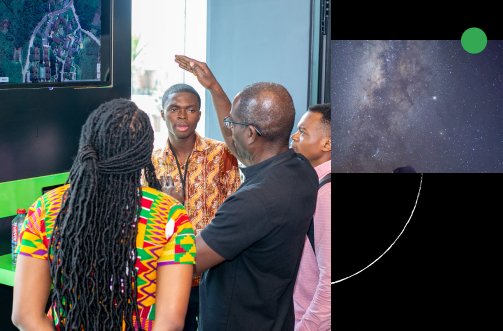
Michal Lukasik
I am a Senior Research Scientist at Google Research in New York, USA. My research interests broadly lie in the areas of machine learning and natural language processing, with focus on loss function design, LLMs and deep learning.
Research Areas
Authored Publications
Sort By
Better autoregressive regression with LLMs via regression-aware fine-tuning
Zhao Meng
Aditya Menon
The Thirteenth International Conference on Learning Representations (2025)
Preview abstract
Decoder-based large language models (LLMs) have proven highly versatile, with remarkable successes even on problems ostensibly removed from traditional language generation. One such example is solving regression problems, where the targets are real numbers rather than textual tokens. A common approach to use LLMs on such problems is to perform fine-tuning based on the cross-entropy loss, and use autoregressive sampling at inference time. Another approach relies on fine-tuning a separate predictive head with a suitable loss such as squared error. While each approach has had success, there has been limited study on principled ways of using decoder LLMs for regression. In this work, we compare different prior works under a unified view, and introduce regression-aware fine-tuning(RAFT), a novel approach based on the Bayes-optimal decision rule. We demonstrate how RAFT improves over established baselines on several benchmarks and model families.
View details
TRACT: Regression-Aware Fine-tuning Meets Chain-of-Thought Reasoning for LLM-as-a-Judge
Cheng-Han Chiang
Hung-yi Lee
Proceedings of the 63rd Annual Meeting of the Association for Computational Linguistics (Volume 1: Long Papers), Association for Computational Linguistics (2025)
Preview abstract
The LLM-as-a-judge paradigm uses large language models (LLMs) for automated text evaluation, where a numerical assessment is assigned by an LLM to the input text following scoring rubrics. Existing methods for LLM-as-a-judge use cross-entropy (CE) loss for fine-tuning, which neglects the numeric nature of score prediction. Recent work addresses numerical prediction limitations of LLM fine-tuning through regression-aware fine-tuning, which, however, does not consider chain-of-thought (CoT) reasoning for score prediction. In this paper, we introduce TRACT (Two-stage Regression-Aware fine-tuning with CoT), a method combining CoT reasoning with regression-aware training. TRACT consists of two stages: first, seed LLM is fine-tuned to generate CoTs, which serve as supervision for the second stage fine-tuning. The training objective of TRACT combines the CE loss for learning the CoT reasoning capabilities, and the regression-aware loss for the score prediction. Experiments across four LLM-as-a-judge datasets and two LLMs show that TRACT significantly outperforms existing methods. Extensive ablation studies validate the importance of each component in TRACT.
View details
Bipartite Ranking From Multiple Labels: On Loss Versus Label Aggregation
Lin Chen
Aditya Menon
2025
Preview abstract
Bipartite ranking is a fundamental supervised learning problem, with the goal of learning a ranking over instances with maximal Area Under the ROC Curve (AUC) against a single binary target label. However, one may often observe multiple binary target labels, e.g., from distinct human annotators. How can one synthesize such labels into a single coherent ranking? In this work, we formally analyze two approaches to this problem -- loss aggregation and label aggregation -- by characterizing their Bayes-optimal solutions. We show that while both approaches can yield Pareto-optimal solutions, loss aggregation can exhibit label dictatorship: one can inadvertently (and undesirably) favor one label over others. This suggests that label aggregation can be preferable to loss aggregation, which we empirically verify.
View details
Bipartite Ranking From Multiple Labels: On Loss Versus Label Aggregation
Lin Chen
Aditya Menon
2025
Preview abstract
Bipartite ranking is a fundamental supervised learning problem, with the goal of learning a ranking over instances with maximal area under the ROC curve (AUC) against a single binary target label. However, one may often observe multiple binary target labels, e.g., from distinct human annotators. How can one synthesize such labels into a single coherent ranking? In this work, we formally analyze two approaches to this problem—loss aggregation and label aggregation—by characterizing their Bayes-optimal solutions. We show that while both approaches can yield Pareto-optimal solutions, loss aggregation can exhibit label dictatorship: one can inadvertently (and undesirably) favor one label over others. This suggests that label aggregation can be preferable to loss aggregation, which we empirically verify.
View details
Bipartite Ranking From Multiple Labels: On Loss Versus Label Aggregation
Lin Chen
Aditya Menon
Forty-second International Conference on Machine Learning (2025)
Preview abstract
Bipartite ranking is a fundamental supervised learning problem, with the goal of learning a ranking over instances with maximal area under the ROC curve (AUC) against a single binary target label. However, one may often observe multiple binary target labels, e.g., from distinct human annotators. How can one synthesize such labels into a single coherent ranking? In this work, we formally analyze two approaches to this problem—loss aggregation and label aggregation—by characterizing their Bayes-optimal solutions. We show that while both approaches can yield Pareto-optimal solutions, loss aggregation can exhibit label dictatorship: one can inadvertently (and undesirably) favor one label over others. This suggests that label aggregation can be preferable to loss aggregation, which we empirically verify.
View details
Preview abstract
Large language models (LLMs) have shown strong results on a range of applications,
including regression and scoring tasks. Typically, one obtains outputs from an LLM via autoregressive sampling from the model’s output distribution. We show that this inference
strategy can be sub-optimal for common regression and scoring evaluation metrics. As a
remedy, we build on prior work on Minimum Bayes Risk decoding, and propose alternate
inference strategies that estimate the Bayes-optimal solution for regression and scoring metrics in closed-form from sampled responses. We show that our proposal significantly improves over baselines across datasets and models.
View details
Teacher's pet: understanding and mitigating biases in distillation
Aditya Krishna Menon
Transactions on Machine Learning Research (2022)
Preview abstract
Knowledge distillation is widely used as a means of improving the performance of a relatively simple student model using the predictions from a complex teacher model.
Several works have shown that distillation significantly boosts the student's overall performance;
however, are these gains uniform across all data subgroups?
In this paper, we
show that
distillation can harm performance on
certain subgroups,
e.g., classes with few associated samples, compared to the vanilla student trained using the one-hot labels.
We trace this behaviour to errors made by the teacher distribution being transferred to and amplified by the student model.
To mitigate this problem,
we present techniques
which soften the teacher influence for subgroups where it is less reliable.
Experiments on several image classification benchmarks show that these modifications of distillation maintain boost in overall accuracy,
while additionally ensuring improvement in subgroup performance.
View details
Scaling Graph Neural Networks with Approximate PageRank
Aleksandar Bojchevski
Johannes Klipera
Amol Kapoor
Martin Blais
Benedek András Rózemberczki
Stephan Günnnemann
KDD (2020)
Preview abstract
Graph neural networks (GNNs) have emerged as a powerful approach for solving many network mining tasks. However, despite their successes on small datasets, efficiently utilizing them on massive web-scale data remains a challenge.
All recently proposed scalable GNN approaches rely on a message passing procedure to propagate information on the graph, leading to expensive recursive neighborhood expansion (and aggregation) schemes during both training and inference. This limitation is particularly problematic if we want to consider neighbors that are multiple hops away.
In contrast, by leveraging connections between GNNs and personalized PageRank, we develop a model that incorporates multi-hop neighborhood information in a single (non-recursive) step.
Our model \model, is significantly faster than previous scalable approaches while maintaining state-of-the-art prediction performance. Moreover, our algorithm can produce a scalability certificate which guarantees that the predictions will not change if we would have used instead a more expensive non-scalable baseline.
To demonstrate the strengths and the scalability of our approach we both evaluate on existing datasets, and propose a new large scale graph learning setting, using the open academic graph (90M nodes, 3B edges).
Additionally, we discuss the practical applications of large-scale semi-supervised learning, like \model~ at Google to solve node classification problems.
View details
Semantic label smoothing for sequence to sequence problems
Himanshu Jain
Aditya Krishna Menon
Seungyeon Kim
EMNLP (2020) (to appear)
Preview abstract
Label smoothing has been shown to be an effective regularization strategy in classification, that prevents overfitting and helps in label de-noising.
However, extending such methods directly to seq2seq settings, such as Machine Translation, has been hindered by the large target output space, making it intractable to apply label smoothing over all possible outputs. Most existing approaches for seq2seq settings either do token level smoothing, or smooth over sequences generated by randomly substituting tokens in the target sequence. Unlike these works, in this paper, we propose a technique that smooths over \emph{well formed} relevant sequences that not only have sufficient n-gram overlap with the target sequence, but are also \emph{semantically similar}. Our method shows a consistent and significant improvement over the state-of-the-art techniques on different datasets.
View details
Preview abstract
Document and discourse segmentation are two fundamental NLP tasks pertaining to breaking up text into constituents, which are commonly used to help downstream tasks such as information retrieval or text summarization. In this work, we propose three transformer-based architectures and provide comprehensive comparisons with previously proposed approaches on three standard datasets. We establish a new state-of-the-art, reducing in particular the error rates by a large margin in all cases. We further analyze model sizes and find that we can build models with many fewer parameters while keeping good performance, thus facilitating real-world applications.
View details
